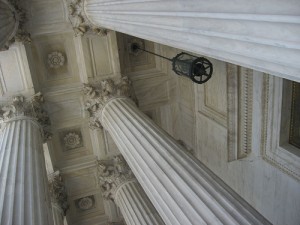SLLC Files Supreme Court Amicus Brief in Statute of Limitations Case Involving a City
Posted
21 Aug 2017 in Case Notes, Commentary, IMLA Briefs, Monday Morning Review
Federalism cases raise legal issues big and small, pedestrian and esoteric.
The very simple question in Artis v. District of Columbia is what does it mean for a statute of limitations to “toll” under 28 U.S.C 1367(d)? The State and Local Legal Center (SLLC) filed a Supreme Court amicus brief agreeing with the District of Columbia’s interpretation of “toll.”
A year after the fact, Stephanie Artis sued the District of Columbia in federal court bringing a number of federal and state law claims related to her termination as a code inspector. It took the federal district court over two and a half years to rule on her claims. It dismissed her sole federal claim as “facially deficient” and no longer had jurisdiction to decide the state law claims.
28 U.S.C 1367(d) states that statutes of limitations for state law claims pending in federal court shall be “tolled” for a period of 30 days after they are dismissed (unless state law provides a longer tolling period).
While Artis was waiting for the federal district court to rule, the three-year statutes of limitations on all her state law claims passed. She waited 59 days to re-file her claims in state court after the federal district court dismissed her case.
Was her claim timely? The District of Columbia Court of Appeals held no.






